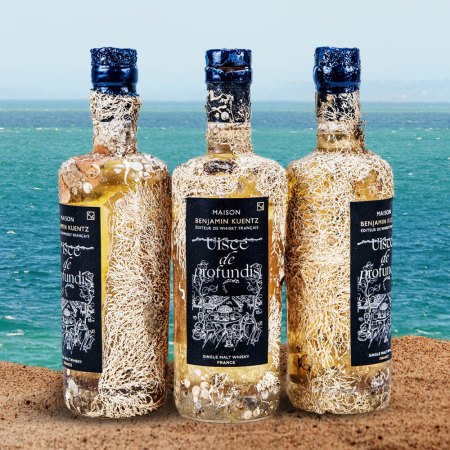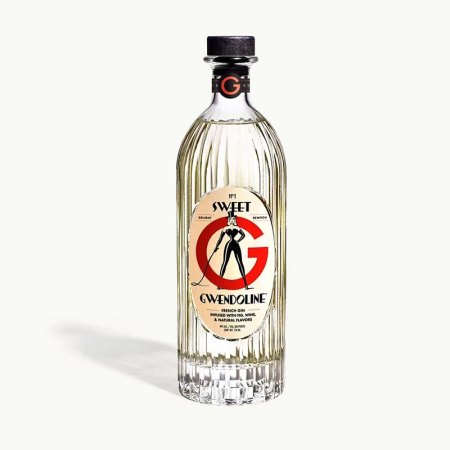Nobody knows gin quite like Keli Rivers, the “ginnoisseur” at exceedingly atmospheric cocktail house Whitechapel in the Tenderloin, where the proprietors promise the most extensive selection of gins in North America. (We have no reason to doubt them.)
Speaking to us from a Maui beach, Rivers — genever mojito in hand — told us why every man should maintain his own library of fine gins.
Here’s what we learned.
InsideHook: Why should I build my home bar around gin? Whisky, vodka, wine — they’ve all treated me kindly in the past.
Keli Rivers: Historically, gin has been the spirit of choice when it comes to cocktails. Easier and cheaper to obtain, more versatile in its applications, and it spoke to a larger, more educated clientele. More gin cocktails have stood the test of time when it comes to classics. With the craft whisky insurgence over the last few years, drinkers and distillers alike are looking for the next big thing — and gin is the front runner for that tittle. I find it easier to bring back to the fold those drinkers that have strayed from the pack by telling them how similar it is to vodka, whisky and even brandy.
IH: How do you even begin to buy a good gin?
KR: It really depends on how far down the rabbit hole you want to go. When I travel, I go to a craft cocktail bar on a less busy day and chat up the bartender while drinking different gins. There are so many brands and each one does something different, so I like taste-testing them in the cocktail I would be making at home.
As for brands, I suggest starting with what you like. If you’re not a fan of heavy juniper gins, I would normally say not to go with the Big Four: Bombay, Tanqueray, Beefeater and Gordon’s. But with the category exploding, those brands have different expressions that appeal to lighter palates, so it isn’t a hard rule any more.
I say any well stocked bar should have a standard London Dry, a softer, citrus-forward New Western, and either a Genever or Old Tom. As for my personal favorite — that’s like asking a parent what their favorite child is: they have one, but they don’t tell.
IH: Are there any particular brands doing innovative things with gin?
KR: Are there ever! It’s a great time to be a gin distiller. You have the newer distilleries doing crazy, unthought-of things, like Pierda Almas adding botanicals to their mezcal or Cambridge Distillery adding forged red wood ants to their distillation. Grain-to-bottle craft distiller Spirit Works in Sebastopol, California makes one of the best sloe gins I’ve ever had.
Then you have the pioneers like Tanqueray bringing back defunct recipes that have been collecting dust for 100 years. You have historians like Jared Brown at SipSmith getting new gin drinkers excited again about London gin and Ben Cappy at Captive Spirits aging gin for three years. Let’s not forget how genever is slowly making its way to the bar, back where it belongs. Brands like Bols and Diep 9 are leading the charge when it comes to its rebirth here in the states.
IH: What’s your favorite piece of gin lore?
KR: From Pliny the Elder to the importance of tonics to fight malaria … I would have to pick the duck-billed masks filled with crushed juniper berries used by the incompetent “doctors” during Black Death, who knew nothing of the disease, let alone how to cure it. It’s rumored that this might be the origin of the term “quack.” Juniper was known as a cure-all by the mid 1300s. It didn’t cure the disease, but the oils found in the berries warded off the fleas on the rats that were the cause of the plague outbreak — though this wasn’t understood for years.
IH: What’s your absolute favorite way to drink gin, and can we get the recipe?
KR: For tasting purposes, I go for a Gin Cocktail: 2 ounces of spirit, bar spoon of gum syrup (I use Small Hand Foods) and 3 or 4 dashes of aromatic bitters, like Abbott’s or Bitter Truth Jerry Thomas bitters. Stirred and poured over a nice cube or two. Garnished with either a lemon peel (for heavier juniper gins) or grapefruit peel (citrus or floral-forward gins). I add a few grates of fresh cinnamon to this when I use genever, Old Tom or aged gin.
Keli Rivers is the “gin sommelier” at Whitechapel, 600 Polk Street, San Francisco.
This article was featured in the InsideHook SF newsletter. Sign up now for more from the Bay Area.





















